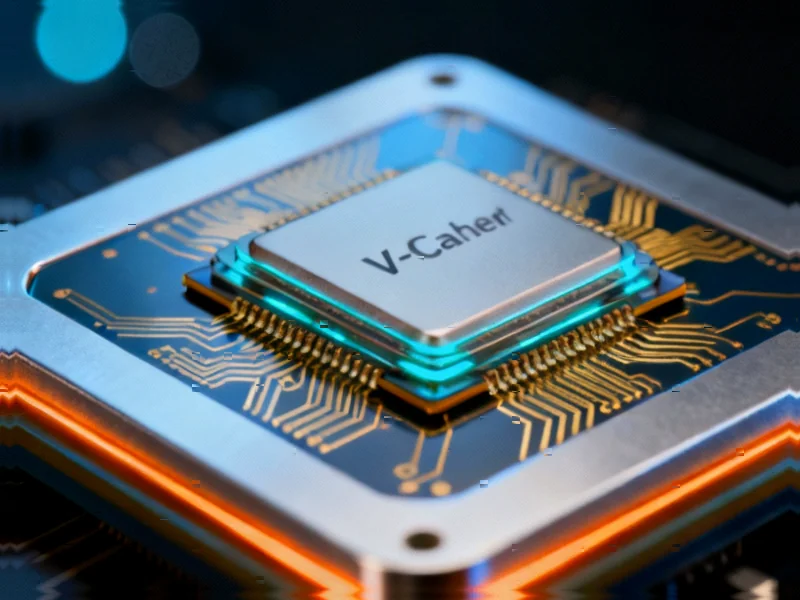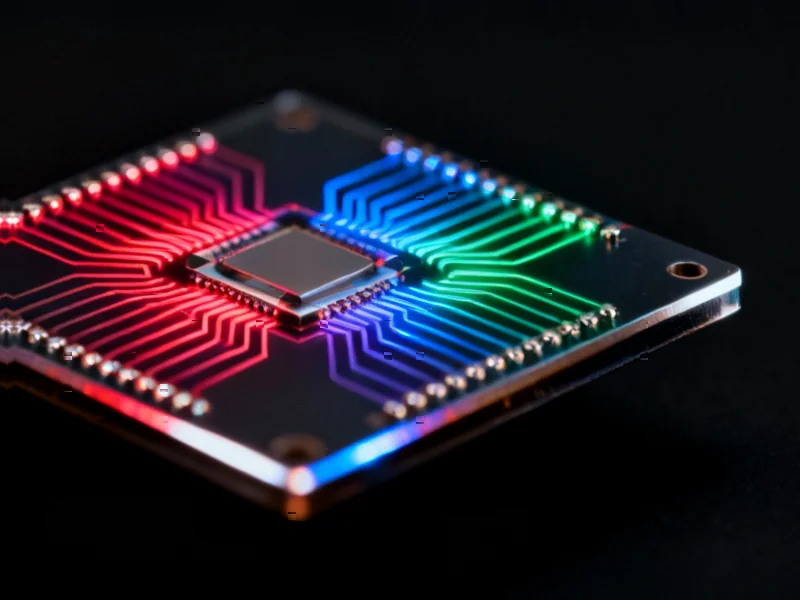AMD’s product roadmap appears to be accelerating into overdrive, with multiple sources now indicating the chipmaker is preparing a substantial desktop computing offensive for CES 2026. According to emerging reports, AMD plans to launch not just incremental updates but potentially groundbreaking new configurations of its Zen 5 architecture, including what could be the first dual-CCD X3D processors and a comprehensive refresh of its desktop APU lineup. If these rumors hold, AMD is positioning itself to dominate multiple computing segments simultaneously—a strategic move that could reshape competitive dynamics across the entire PC landscape.
Table of Contents
- The X3D Evolution: Beyond Incremental Improvements
- APU Renaissance: Bringing Mobile Innovation to Desktop
- Market Timing and Strategic Implications
- Technical Challenges and Manufacturing Considerations
- The Competitive Landscape in 2026
- Broader Industry Implications
- Looking Beyond CES 2026
- Related Articles You May Find Interesting
The X3D Evolution: Beyond Incremental Improvements
What makes these reported developments particularly intriguing isn’t just the timing but the architectural ambition. Sources suggest AMD will introduce Ryzen 9 9950X3D2 and Ryzen 7 9850X3D processors, with the former potentially featuring dual 3D V-Cache-equipped compute dies. This would represent a significant departure from AMD’s previous X3D strategy, which typically reserved the additional cache for a single CCD even in multi-die configurations. The implications for memory-sensitive workloads could be substantial—imagine gaming scenarios where both compute complexes have direct access to massive cache pools rather than one being cache-starved.
The specifications reportedly include a total of 192MB cache for the flagship 9950X3D2—64MB more L3 cache than the standard 9950X3D—though with a slight 100MHz reduction in boost clocks. Meanwhile, the Ryzen 7 9850X3D is said to maintain the single-CCD cache configuration but with a 500MHz frequency bump over its predecessor. This differentiation suggests AMD is refining its segmentation strategy, offering distinct optimization paths for different user profiles rather than a one-size-fits-all approach to cache implementation.
APU Renaissance: Bringing Mobile Innovation to Desktop
Perhaps even more significant for the broader market is AMD’s reported plan to bring its Strix Point APU architecture to the AM5 platform. After what will have been nearly two years since the Ryzen 8000G series launch, desktop users may finally get APUs that don’t feel like technological afterthoughts. The inclusion of up to 12 Zen 5 cores and RDNA 3.5-based integrated graphics equivalent to the Radeon 890M could fundamentally change what’s possible without discrete graphics.
This development speaks to a broader trend in computing: the erosion of boundaries between integrated and discrete performance. As someone who’s tracked semiconductor developments for over fifteen years, I’ve watched APUs evolve from basic video playback solutions to legitimate gaming platforms. The reported Ryzen 9000G series (or possibly Ryzen 10000G, according to some naming convention confusion) could represent the point where integrated graphics become truly viable for mainstream gaming—not just esports titles but increasingly demanding AAA experiences.
Market Timing and Strategic Implications
The CES 2026 timing is strategically fascinating. By launching both X3D processors and next-gen APUs simultaneously, AMD appears to be executing a pincer movement against competitors across multiple price segments. The X3D parts will likely target the premium gaming and creator markets where Intel’s Arrow Lake and Lunar Lake architectures are expected to compete, while the APUs could put significant pressure on entry-level discrete GPU sales and Intel’s own integrated graphics offerings.
What’s particularly noteworthy is how this potential launch aligns with broader industry shifts. The PC market has been in a state of flux since the pandemic-driven buying surge subsided, with manufacturers and component suppliers seeking the next catalyst for upgrade cycles. AMD’s dual-pronged approach—pushing both extreme performance through X3D and integrated versatility through APUs—suggests the company believes the path forward involves serving increasingly specialized use cases rather than chasing single-threaded performance benchmarks alone.
Technical Challenges and Manufacturing Considerations
The engineering behind these reported products shouldn’t be underestimated. Implementing 3D V-Cache across multiple CCDs introduces thermal and power delivery complexities that AMD has previously avoided. The company’s decision to potentially take this step now suggests confidence in both its packaging technology and thermal management solutions. Similarly, bringing mobile-optimized Strix Point architecture to desktop platforms requires careful consideration of power envelopes and cooling requirements that differ significantly from laptop implementations.
From a manufacturing perspective, this product stack represents an interesting utilization of AMD’s diversified production capabilities. The X3D parts likely leverage TSMC’s advanced 3D packaging technology, while the APUs may utilize more cost-optimized processes. This flexibility has become one of AMD’s key competitive advantages—the ability to mix and match manufacturing approaches based on product requirements rather than being locked into a single process node across an entire generation.
The Competitive Landscape in 2026
By CES 2026, the competitive environment will have evolved significantly. Intel will likely have multiple generations of its new architectures in market, while companies like Qualcomm and NVIDIA continue pushing into the PC space with Arm-based solutions. AMD’s reported product strategy appears designed to maintain pressure across all fronts—matching or exceeding Intel in traditional desktop performance while simultaneously defending against Arm incursions with highly integrated APU solutions that offer compelling performance-per-watt characteristics.
The timing also suggests AMD is accelerating its product cadence. The company has traditionally spaced major desktop launches more widely, but the competitive intensity of the current market appears to be driving faster iteration cycles. This benefits consumers through more frequent meaningful upgrades but also raises questions about platform longevity and upgrade paths—particularly for AM5 socket users who invested early in the platform.
Broader Industry Implications
Beyond the immediate competitive dynamics, these developments signal several important industry trends. The continued investment in 3D caching technology validates that memory bandwidth and latency remain critical bottlenecks in modern computing architectures. Similarly, the resources being devoted to desktop APUs suggest that the lines between different computing form factors continue to blur, with technologies developed for mobile applications increasingly influencing desktop designs.
For component manufacturers and system integrators, AMD’s reported roadmap necessitates preparation for increasingly diverse product configurations. The combination of high-cache CPUs and powerful integrated graphics creates new possibilities for compact systems that don’t sacrifice performance for form factor. This could accelerate trends toward smaller desktop footprints and more versatile all-in-one designs that challenge traditional tower configurations.
Looking Beyond CES 2026
While CES 2026 provides the immediate timeline for these reported launches, the strategic implications extend much further. AMD appears to be building toward a computing vision where specialization and integration coexist—where users can choose extreme performance through technologies like 3D V-Cache or exceptional versatility through advanced APUs, all within the same platform ecosystem. This approach contrasts with the one-architecture-fits-all mentality that has dominated much of PC history.
The success of this strategy will depend on execution details we can’t yet assess—pricing, availability, software optimization, and thermal performance. But the ambition is clear: AMD wants to define multiple segments of the computing market simultaneously rather than ceding any category to competitors. As the industry moves toward more specialized computing workloads and form factors, this comprehensive approach could prove prescient—or overextended. Either way, CES 2026 is shaping up to be a pivotal moment for desktop computing evolution.



